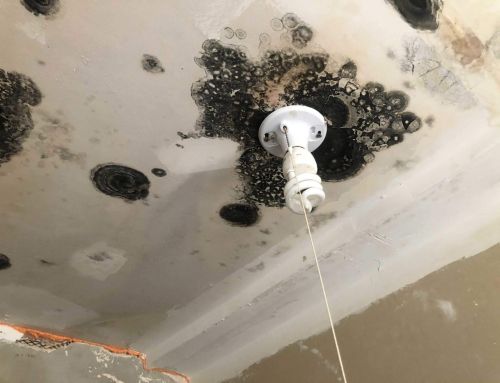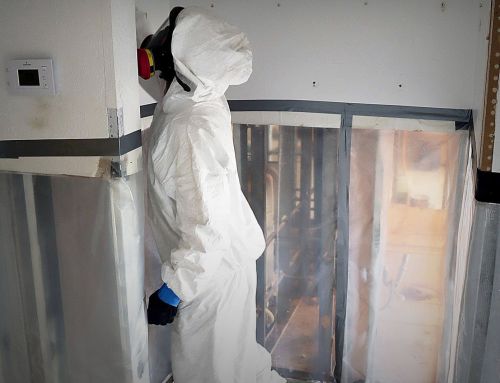Having mold growing inside the home is a serious problem that can cause health issues and make it impossible to sell your house. Mold can grow anywhere inside your home due to water damage. It can also grow due to condensation caused by high indoor humidity, and this problem often leads to mold living inside your ductwork. When this happens, your HVAC system will spread mold spores throughout the entire house whenever the fan runs. If you find yourself facing this situation, here is everything you need to know to ensure the mold problem is properly taken care of.
How Does Mold Form in an HVAC System?
Mold typically forms inside ductwork for two reasons that are often interlinked. The first is that the humidity level inside the home is above 60%, and the second is when ductwork runs through unconditioned areas like an attic or crawlspace. When the indoor humidity level is too high, it can allow condensation to form on any surface including inside your ductwork.
The problem is worse when the ducts run through an area that is much hotter or colder than the rest of the building, such as an attic, basement or crawlspace. In this situation, the temperature difference between the air inside the ducts and the air surrounding them can instantly cause moisture in the air to condensate. This is the same reason why water droplets form on a cold glass in hot weather.
Mold can also get inside your ducts due to plumbing leaks. In this case, you will first need to have a plumber fix the leak before you can begin with mold remediation.
The Importance of Mold Testing
If you smell any moldy or musty odors coming from your HVAC vents, you should immediately schedule a mold test. At Pur360, we use highly sensitive equipment that can immediately measure the concentration of mold spores inside your home. A small concentration of mold is normal as it can get inside the house from outside. However, if the concentration is above normal, then we will need to perform a full inspection to determine which areas of the home are affected.
Understanding Mold Remediation
If we detect that mold is present inside your HVAC system, our patented technology can quickly remove it from your ductwork. It also eliminates mold spores throughout the rest of your home including those in your carpets and furnishings. Not only does it eliminate all of the mold, it also takes care of any odors and leaves your house smelling fresh and clean.
Our process is 100% natural, safe and free of any chemicals. Instead of using chemical fungicides, we use a special ultraviolet light sterilization process. It works by permeating into every surface of your home to destroy mold and prevent spores from further spreading throughout the house. It even penetrates throughout your ductwork system. This enables us to take care of the mold in your ducts without needing to take them apart, which is not possible with most other mold remediation methods.
Our process works to take care of all of the mold inside the entire home. However, there are times when the mold can spread from your ductwork and colonize the insulation and sheetrock inside your walls. While our mold remediation services can still take care of these issues, there are situations where it is necessary to remove any items or materials that are overly contaminated.
If the humidity level inside your home is too high, we will also use dehumidifiers to absorb moisture from the air. This is necessary as we first need to make sure everything is dry before we undertake the remediation.
How UV Lights Can Help Reduce Mold Issues
Remediation is necessary if you have mold inside your ductwork or elsewhere in the home. However, the problem can soon return if you don’t also take steps to take care of whatever issues originally allowed the mold to begin growing.
One of the best ways to prevent mold from growing inside your home is to install germicidal UV lights. These are small units that are usually installed inside your ductwork. As air flows through the unit, it is exposed to powerful UV rays. This UV light damages the DNA of mold spores, which renders them harmless and prevents them from spreading. These rays also kill bacteria, pollen, dust mites and any other living carbon-based particles. HVAC UV lights work similarly to our mold remediation process except that the lights are constantly eliminating mold whenever your AC or heating is on.
Germicidal UV lights are highly recommended for any areas or homes that are frequently hot and humid. In fact, they are a good idea for any home as they can quickly improve indoor air quality. Eliminating pollen, mold spores and other airborne particles is especially helpful for anyone who has asthma or breathing problems or for those who frequently suffer from allergies.
Other Ways to Control Humidity and Prevent Mold Growth
High indoor humidity is a problem that affects many homes. Your air conditioning helps to reduce humidity during the summer as excess moisture in the air collects on the evaporator coil whenever your AC runs. Nonetheless, there are many cases when AC alone is not sufficient to prevent the humidity level from rising too high and allowing mold to begin growing.
If your home’s humidity regularly rises above 60%, you may want to consider installing a whole-home dehumidifier. These units work to reduce humidity in the same way as your AC does. The system draws hot air over a cold coil, which causes the moisture in the air to condense into water. This water is then drained out through a nearby floor drain or pumped out of the building.
A whole-home dehumidifier works with your HVAC system and is controlled by your thermostat. If the humidity level inside is still too high when your AC turns on, the thermostat signals the dehumidifier to run until either the humidity drops to the normal level or your AC turns back on.
Another easy way to prevent mold from growing inside your HVAC system is to make sure that your ducts are well insulated. The ducts inside your walls and in the main part of the home generally don’t need insulation. However, any ducts that run through a crawlspace or attic should be fully wrapped in insulation. This works to prevent hot or cold air from coming into contact with the ducts and allowing condensation to form.
You can also help to prevent mold issues simply by making sure to keep all of your windows and doors closed any time the outdoor humidity is higher. However, you still need to leave your AC on or an exhaust fan running or else the humidity level will still increase. If you leave even one window open, all of the moisture outside can quickly cause the humidity level inside the home to become too high. The moisture can then penetrate and soak into your walls, floors and furnishings and allow mold spores to reproduce and multiply.
Professional Mold Testing and Remediation Services
If you suspect your home has a mold problem, Pur360 is ready to help. We specialize in mold testing and mold remediation, and our patented process can quickly ensure your home is mold free. Our process works just as well in any type of building from homes to office buildings and even inside your vehicle. We are headquartered in Chicago, but we also serve customers in Florida, Texas, Wisconsin, and Georgia. To schedule mold testing or remediation for your building, give us a call today.



